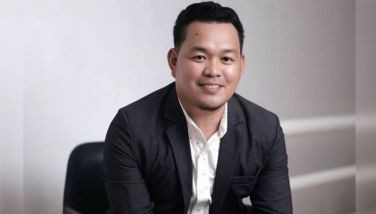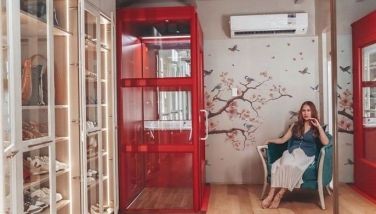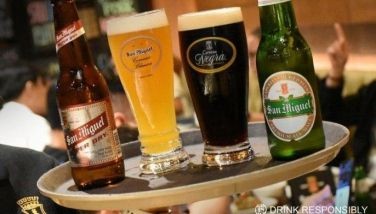Green architecture

Congratulations are in order for the recently-concluded Worldbex, an annual event that the country’s builders and related industries look forward to eagerly.
Worldbex is Asia’s biggest and most-attended construction exposition. This year, their theme is Going Green, a timely direction considering the world’s pre-occupation with saving the environment. They invited Christopher Kearns who headed the team responsible for the master planning and design of Singapore Changi airport terminals 1, 2 and 3 who spoke on green architecture together with our local master architects Felino Palafox and Paulo Alcazaren.
Our local architects can indeed learn a lot from this new trend in architecture which optimizes natural settings that ultimately help conserve the environment. Changi airport boasts of a roof architecture that allows natural light into the building while keeping the heat out. This is perfect for tropical countries like ours because the heat outside renders the air conditioning system “inutile” if not considered in the general architecture. Changi has 919 skylights with reflector panels that adjust automatically. The terminal building enjoys uniform daylight without need for artificial lights. Since artificial lights are only needed at night, the whole terminal runs on lower energy costs.
The Worldbex people are very excited because, as they say, “who knows, the next green airport may be our very own NAIA.”
Mariwasa Tiles shine
Spotted among the impressive exhibitors in the expo was Mariwasa Tiles. The company president Thai national Surasak Kraiwichaichareon was there personally to introduce the company’s new designs. This year, they are going floral, with soft colors enhancing the natural beauty of the tiles.
I met Surasak about two years ago when we went to Thailand on the invitation of the SCG (Siam Cement Group), a leading industrial conglomerate in ASEAN comprising five core businesses, which include chemicals, paper, cement, building materials and distribution. I was very impressed with the company’s global competitiveness, and Surasak was one of the key executives of this conglomerate.
We visited their showroom for tiles (Cotto) and I was really impressed with their advanced production technology and product design capability. They had tiles which incorporated natural elements like grass and flowers, beautiful renditions which brought the freshness and color of the outdoor into your bathrooms or other parts of the house.
As part of their expansion program, they now have nine business operations in Indonesia, Cambodia, Laos, Vietnam and the Philippines through Mariwasa Siam Ceramics. In strengthening their regional presence, they view the Philippines as a key market in the ASEAN region, which is why they decided to invest in the country. Their other businesses in the Philippines include the United Pulp and Paper Co. Inc. (UPPC) which is now the country’s largest producer of packaging paper and corrugated medium. This is used primarily for carton packaging products. They also have here the CPAC Monier Philippines Inc. which manufactures and distributed high quality concrete roof tiles, fittings and accessories, as well as SCT. The latter is a trading company that supplies energy and industrial supply products as well as recycling products.
Despite the times, Mariwasa Siam Ceramics actually grew its business in the Philippines last year by five percent, compared to year 2007. The construction business is bracing for more hard times, but Surasak says the company has adopted a no lay-off policy. Instead, they are motivating their people to increase production efficiency while cutting unnecessary costs. This policy serves to motivate and solidify the work force indeed, providing a sense of security while other workers in the manufacturing sector worry if they still have a job tomorrow.
This brings to mind the corporate responsibility that the conglomerate as a whole and its member-businesses individually, has chosen to pursue. Apart from sustainable development efforts for self-reliant communities, they recognize that their employees are the key to achieving their goals. They continuously develop their employees’ competence, sending their young executives to pursue higher education in prestigious graduate schools abroad. They put a premium on their employees’ welfare, and this is what Mariwasa Siam Ceramics has put into place in their local operations. Kudos to this progressive company, and to their very affable president, Surasak.
Our hogs are now disease-free
The local hog industry continues to register a negative growth, although the National Federation of Hog Farmers Inc. (NFHFI) says their pricing has remained basically the same. The Ebola scare, though limited to Pandi, Bulacan and some areas of Nueva Ecija only, apparently brought about the drop in sales. I guess consumers would rather hold off on the pork, especially if you are not sure where your supply comes from.
The Ebola scare has been contained apparently. According to Mr. Albert Lim, president of NFHFI, the Dept. of Agriculture through its livestock division, says that the pathogens involved in this Ebola strain is not virulent enough to cause a serious threat. The Ebola pronouncement, though, has caused considerable damage to the industry. Just as they were all set to export to Singapore last December, the order was put on hold because of this. Now that our hogs are Ebola-free, and may I add FMD-free as well, the hog raisers are all set to resume exporting. I understand from the association that Thailand is currently dealing with a Foot-and-Mouth Disease (FMD) infestation which we have successfully hurdled. It should be a good time to corner the export market while our livestock is certified disease-free.
Incidentally, the association, which is composed of forty-eight hog farmers’ associations, is holding their annual convention and trade exhibit on April 23, 24 and 25. This will be a gathering of suppliers of veterinary drugs, equipment, etc., and they will be holding seminars for those who want to go into the hog-raising business seriously. The federation is an advocacy group that seeks to protect the interest of the local hog farmers. As part of their advocacy, they provide education on how to prevent and cope with diseases that affect hogs.
Mabuhay!!! Be proud to be a Filipino.
For comments: (e-mail) businessleisure-star@stv.com.ph
- Latest
- Trending





















